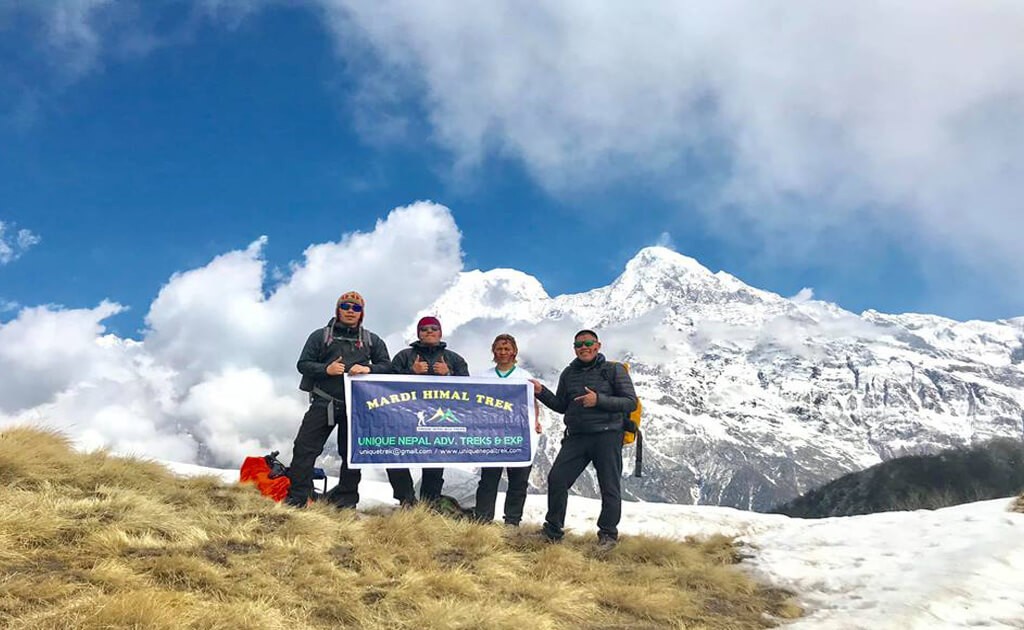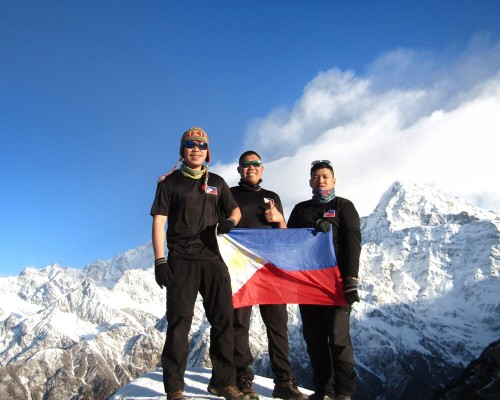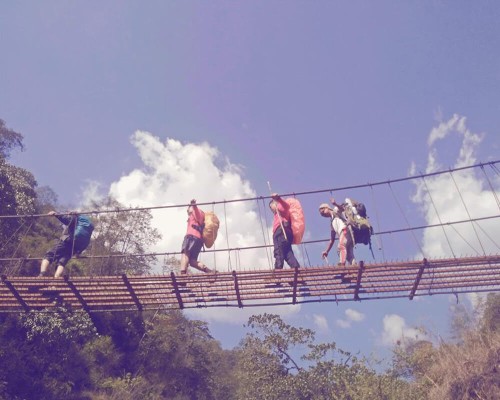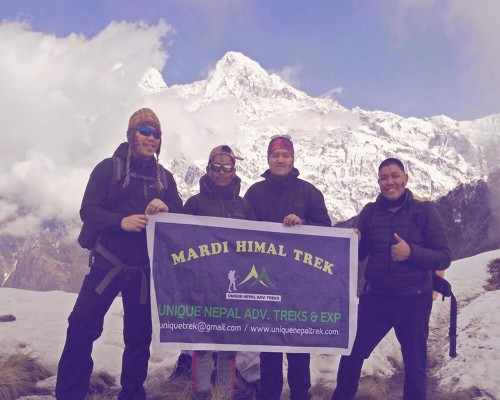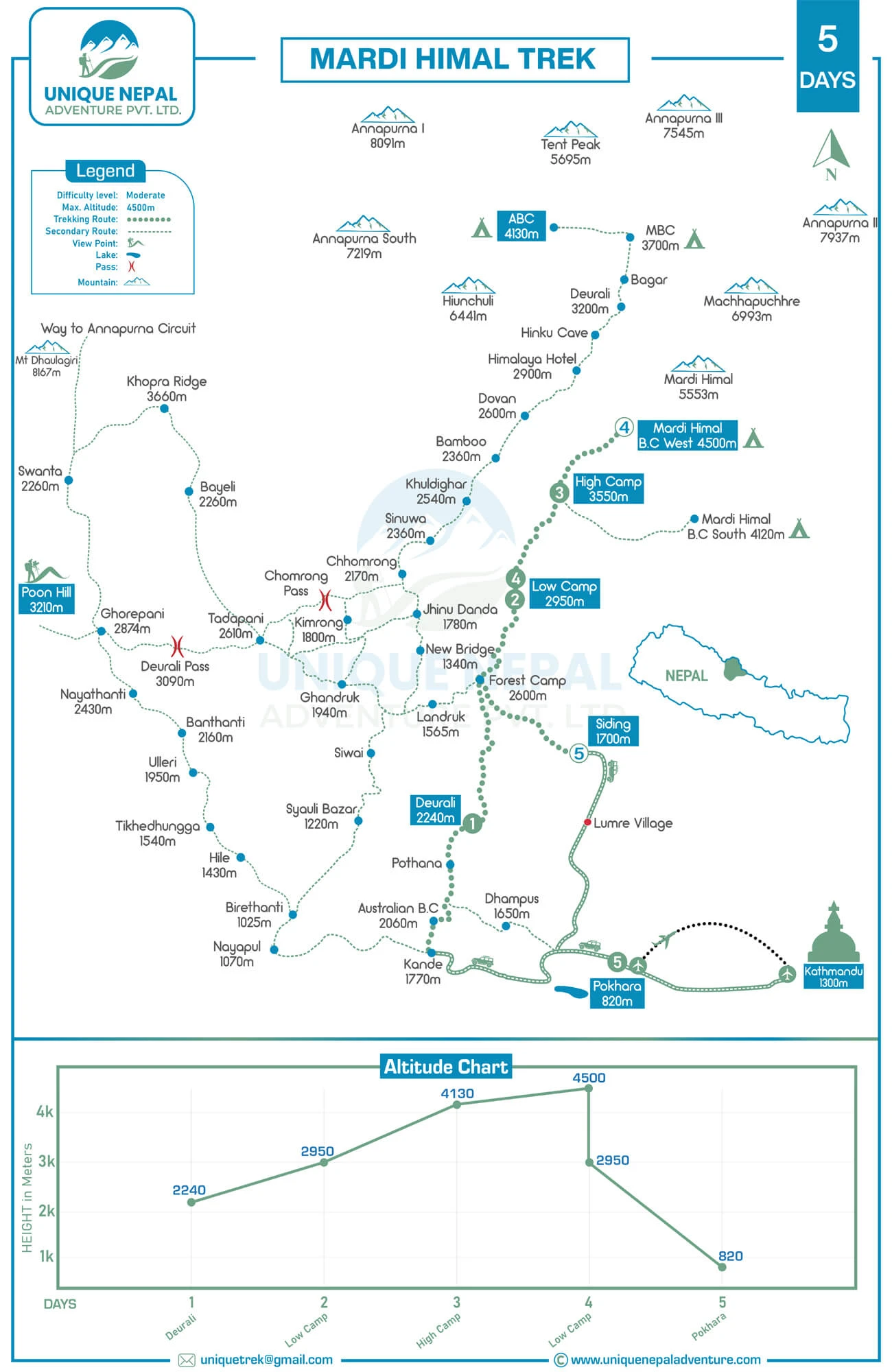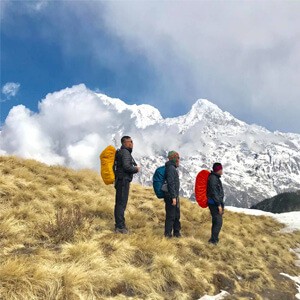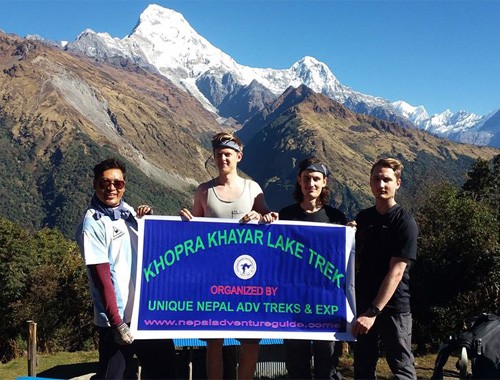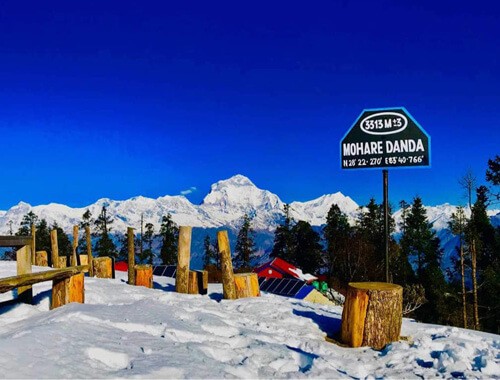Mardi Himal Trek: A Peaceful Nature and Scenic Himalayan View
Discover the serene beauty of the Mardi Himal Trek, a rising favorite among short Himalayan adventures. Located near the Annapurna Base Camp, this 5-day trek offers breathtaking views of Mt. Fishtail (6993 m), Mardi Himal (5587 m), and the stunning Annapurna range, including Annapurna I, II, South, and Hiunchuli.
The Mardi Himal Trek blends epic Himalayan views, serene forests, and authentic Gurung culture into a perfect 5-day adventure—accessible, peaceful, and truly unforgettable.
Winding through lush rhododendron forests, scenic ridgelines, and traditional Gurung villages like Kade, Dhampus, Pothana, Deurali, Forest Camp, High Camp Lwang, and Siding, this peaceful trail combines mountain grandeur with rich local culture. Perfect for trekkers seeking a less-crowded, short yet unforgettable experience, the Mardi Himal Trek is also a fantastic alternative to the Ghorepani Poon Hill Trek.
Why Choose the Mardi Himal Trek?
Looking for a peaceful trek with epic mountain views? The Mardi Himal Trek is a hidden gem—off the beaten path, rich in culture, and bursting with stunning panoramas of Mt. Fishtail and the Annapurna range. Ideal for both beginners and seasoned trekkers, it offers a short yet unforgettable journey through rhododendron forests, quiet ridges, and welcoming Gurung villages. Pure serenity in just a few days!
A Journey Through Scenic Nature, Culture Vibrant
The Mardi Himal Trek offers a perfect mix of natural beauty, mountain adventure, and rich Gurung culture. Ideal for those seeking a moderate trek, it starts from Pokhara and leads through rhododendron forests, scenic ridges, and peaceful high-altitude meadows.
What makes this trek truly special is the authentic village life in places like Lwang and Siding, where you’ll experience warm hospitality, tea gardens, and traditional Himalayan charm without the crowds of longer routes.
Recommended Itinerary for Mardi Himal Trek
Pokhara to Pokhara—5-Day Trekking Plan
Day 1: Drive to Kande, trek to Deurali (2060m)
Day 2: Trek to Forest or Low Camp (2500m)
Day 3: Trek to High Camp (3550m)
Day 4: Hike to Mardi Himal Base Camp (4500m), return to Low Camp
Day 5: Trek down to Siding, drive back to Pokhara
Kathmandu to Kathmandu—9 Days Full Package
Cost of Mardi HImal Trek
The Mardi Himal Trek cost starts at $325 per person for a 5-day full-board program from Pokhara to Pokhara. This includes meals, accommodation, a guide, permits, and local transportation during the trek.
For those starting from Kathmandu, a full 9-day package is available at $415 per person, covering hotels in Kathmandu and Pokhara, round-trip transportation, and the complete trekking service.
Optional porter service is available at $125, covering salary, food, lodging, insurance, and transport. One porter can carry up to 20 kg of luggage.
We offer flexible pricing based on your needs. Just let us know your preferences for a custom quote. Easy and hassle-free booking guaranteed!
How about transportation to get to the Mardi Himal Trek?
Here are the transportation details for reaching the Mardi Himal Trek
- Kathmandu to Pokhara by comfortable tourist bus or by flight
- Pokhara to Phedi or Kade by a comfortable private vehicle.
- After the trek, Sidding to Pokhara by local jeep or local bus.
- Pokhara to Kathmandu by tourist bus or flight
- How would you like to feel free? We can arrange it easily.
Accommodation and Meals
The growing popularity of the Mardi Himal route has led to improved lodging facilities. Every stop along the trail has clean and comfortable teahouses offering basic yet cozy rooms and warm, hygienic meals. Most meals are prepared using fresh, organic ingredients sourced locally.
Expect dishes like dal bhat (rice and lentils), noodles, soups, pancakes, fried rice, and seasonal vegetables. Each guesthouse ensures trekkers are well-fed and well-rested.
Crystal-clear, White Snow Mountain View from Mardi Trek
The Mardi Himal viewpoint offers a thrilling and magnificent view of the majestic mountains. The sight of those glorious peaks is truly awe-inspiring and adds to the majestic experience of the trek.
- Mardi Himal (5587 m / 18330 ft).
- Mt. Fishtail (6993 m / 22943 ft.).
- Annapurna I (8091 m / 26545ft)
- Annapurna South (7219m / 23685ft)
- Annapurna II (7937m / 26040ft)
- Annapurna III (7555m / 24787ft)
- Hiuchuli (6441m / 21132ft)
- Lamjung Himal (6983m / 22910ft)
The best time to visit Mardi Himal Trek
The ideal best times to embark on the Mardi Himal Trek are autumn (September to November) and spring (March to May). These seasons offer consistently clear weather, pleasant temperatures, excellent visibility, and stunningly clear mountain vistas.
While winter (December to February) and the monsoon season (June to August) are viable for trekking, they come with their challenges. Winter can be snowy and bitterly cold, while the monsoon brings frequent rain, cloud cover, and reduced visibility. However, if you prefer trekking during these seasons, we can arrange a safe and successful journey for you.
- Autumn Season: September, October, November, and December
- Winter Season: late December, January, and February
- Spring Season: March, April, and May
- Monsoon Season: June, July, and August.
Do we need any entry permits for the Mardi Himal Trek?
Yes, you need to issue two permits to trek Mardi Himal. It is the Annapurna Conservation Area, and they are required to issue two permits, ACAP and TIMS. We easily issue it; you should send us your passport photocopy and passport-size photos. We issue it, and our guide will carry it during the trek because he has to show it at every permit checkpost. After the end of your trekking, he will give you a souvenir.
- ACAP (Annapurna Conservation Areas Project): Nr. 3000/–
- TIMS (Trekking Information Management System): Nrs. 2000/-

